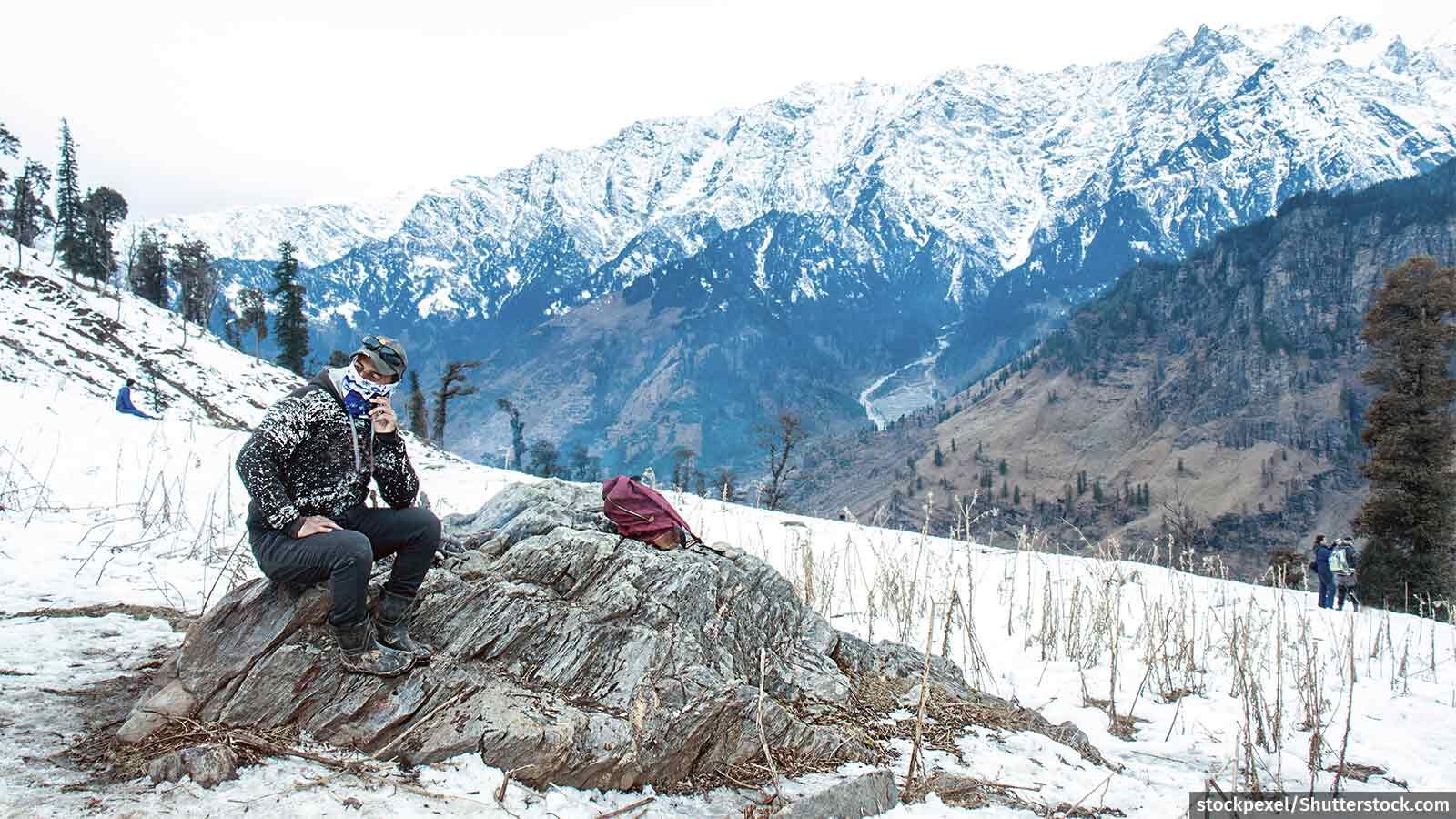More Than Half Of Districts With High Covid-19 Positivity Are Himalayan
Of India's 83 districts with a Covid-19 test positivity ratio higher than 10% by the week ending June 30, 54% were in the mountainous Himalayan region. Experts ascribe this to infections reaching hilly areas later than the plains, and to low and late testing

Mumbai: India's Himalayan region is reporting high levels of Covid-19 positivity, even as the second wave recedes in many parts of India, an IndiaSpend analysis of Ministry of Family and Health Welfare data shows. As of June 30, 54% of 83 districts with a positivity ratio higher than 10% are Himalayan districts.
India's 137 districts in the Himalayan region are spread across 13 states and union territories. The list includes all districts of Arunachal Pradesh, Jammu and Kashmir, Ladakh, Himachal Pradesh, Manipur, Meghalaya, Mizoram, Nagaland, Sikkim, Tripura and Uttarakhand, and the Dima Hasao and Karbi Anglong districts of Assam and Darjeeling and Kalimpong districts of West Bengal. Among these, Arunachal and Meghalaya accounted for 12 of the 15 districts with the highest Covid-19 positivity in late June.
The high positivity in the Himalayan region could be because it is common for infections to spread in plain regions before the hills and possibly due to lower testing rates, experts told us. In Nepal too, Covid-19 has spread first in districts in the plains bordering India before moving north into districts in the sub-Himalayan foothills and the Great Himalayan range. Testing per 100,000 population in all the entirely Himalayan states lags the Indian average, data show.
What the data say
Of India's 732 districts, 83 show more than 10% of Covid-19 tests giving a positive result in the week ending June 30. Of these, more than half, or 45, were from the Himalayan region. The share of such districts has increased from 14% on May 10, 2021 when the health ministry had started releasing daily data on positivity ratios, to 54% by June 30.
The top 15 districts with the highest positivity ratios are also from this region. In Arunachal Pradesh, two districts--East Kameng and Upper Subansiri--have a positivity ratio of more than 90% each. These districts, along with Dibang Valley, Kamle, Tirap and Namsai have the highest positivity ratios in the country.
The average positivity ratio has also been decreasing at a slower pace in these districts. On May 10, the average positivity ratio across the country was 24% and the average in the 137 Himalayan districts was 23%. As of June 30, the countrywide average has gone down to 4.2%, while Himalayan districts have an average positivity ratio of 12%.
Low testing, virus spreading late
"There can be two reasons behind these high positivity rates. The pandemic reached later in the Himalayan regions or the testing is low and only the very sick are getting tested," T. Sundararaman, former dean of the School of Health System Studies at the Tata Institute of Social Sciences, told IndiaSpend.
Anant Bhan, a Pune-based researcher in global health, bioethics and health policy, agreed with these reasons, and added that it is very common for the infections to spread in plain regions before the hilly regions.
In the first wave of the pandemic in India, while cases started climbing countrywide in mid-June 2020 toward the peak of the first wave, the rise began a month later in mid-July in Arunachal Pradesh, a study on the state's pandemic preparedness found in July 2020. The delayed rise was due to Arunachal's geographic isolation and inadequate means of transportation, located entirely within the eastern Himalaya, per the study, features that Arunachal shares with other Himalayan states, including in the North East. In the second wave, as cases started climbing toward the peak in mid-February 2021 countrywide, in Arunachal Pradesh the rise began two months later in mid-April. Himalayan Nepal and Bhutan's first and second outbreaks also trailed India's.
All these states lag the Indian average of Covid-19 tests per 100,000 population, including in June. Moreover, a majority of tests in the high positivity districts by June 30 were rapid antigen, and not the more reliable RT-PCR, except in Nagaland and Sikkim.
But the high positivity ratios are dangerous and governments need to take control of the situation, said the experts. "Teams need to be sent to assess the situation and guide local action," said Sundararaman, "Local action can be taken by data collection, surveillance, isolating families or entire villages, if needed. Hamlets are very dispersed, there are miles between two hamlets. So if the virus is being spread, local action needs to be taken."
"Precaution has to be taken on similar lines--test earlier, make testing accessible just like getting vaccinated. Identify clusters, if any. Isolate people," said Bhan, "The public health bodies need to communicate knowledge about the disease better, messaging is very important."
As of June 29, vaccinations in Manipur, Meghalaya and Nagaland trailed the rest of the country, while the other Himalayan states were ahead of the countrywide averages.
We welcome feedback. Please write to respond@indiaspend.org. We reserve the right to edit responses for language and grammar.


